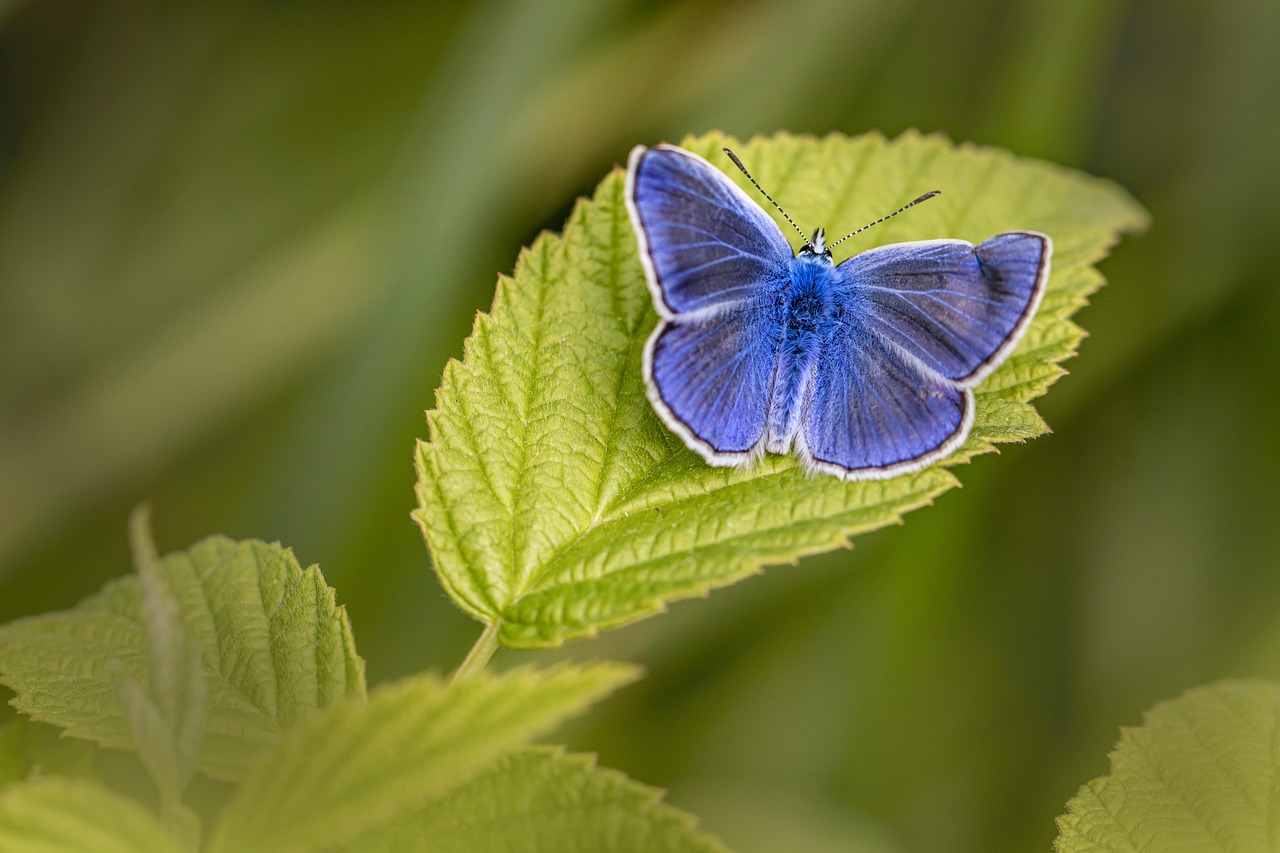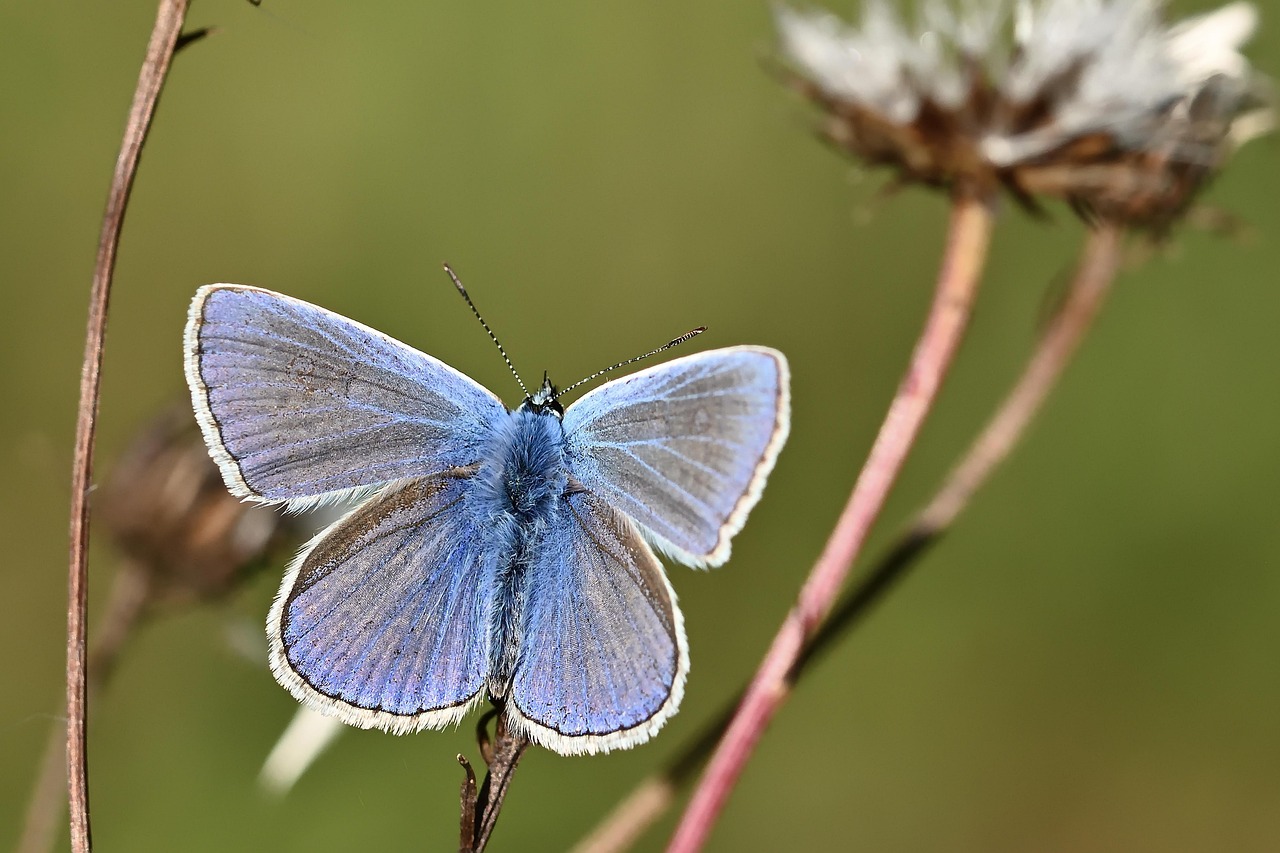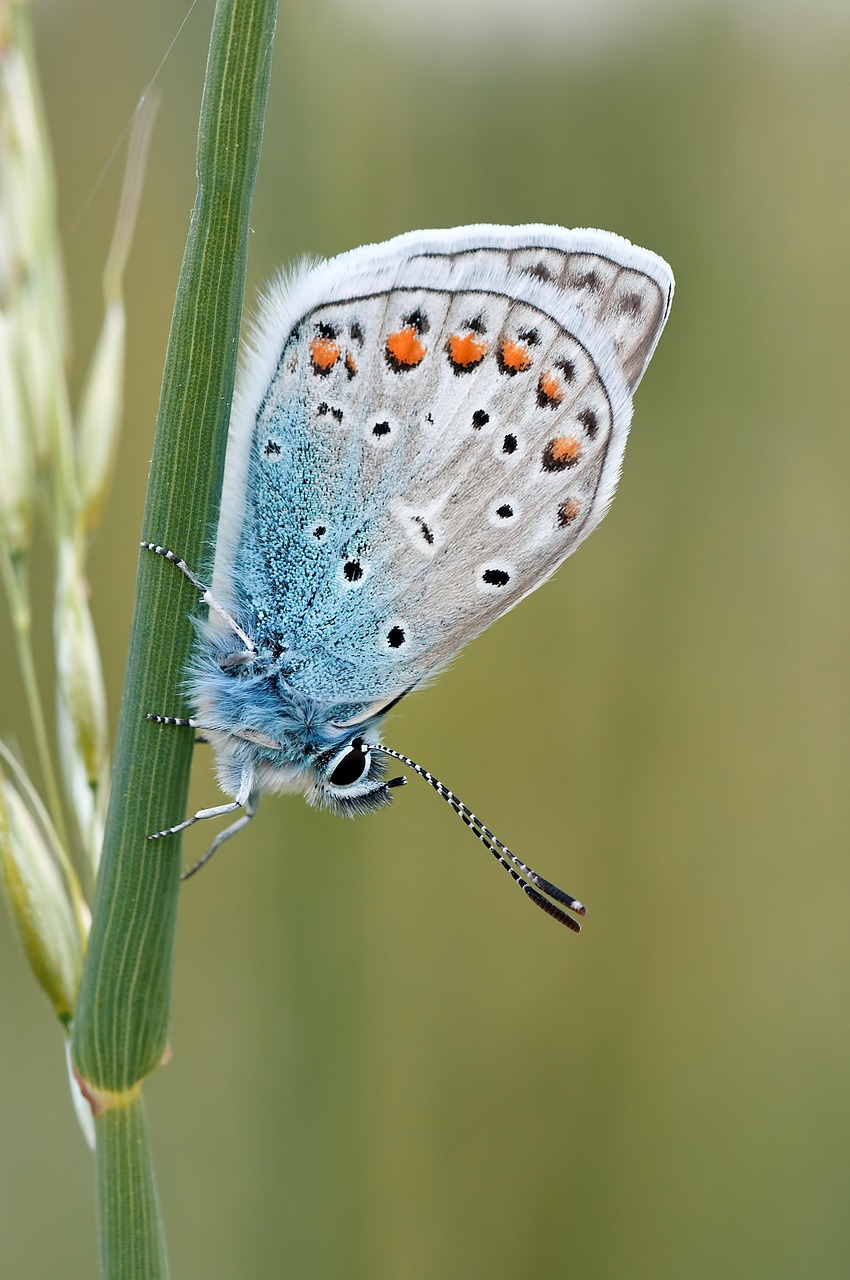The Karner Blue Butterfly requires specific habitat conditions, primarily sandy soils, open sunlit areas, and a healthy population of wild lupine, which serves as its primary larval food source. Conservation of these environments is crucial for their survival and population recovery.
The Karner Blue Butterfly (Lycaeides melissa samuelis) is a small butterfly known for its striking blue wings and its reliance on specific environmental conditions. This species was first identified in the 1940s and has since become an important indicator of ecosystem health. The butterfly’s life cycle is intricately tied to the presence of wild lupine (Lupinus perennis), which provides food for its caterpillars. Unfortunately, due to habitat loss and fragmentation, the Karner Blue Butterfly has become endangered in many regions of its former range.
Understanding the habitat requirements of the Karner Blue Butterfly is essential for effective conservation efforts. These butterflies thrive in dry, sandy ecosystems, often found in areas such as oak savannas, pine barrens, and open grasslands. The presence of wild lupine is critical, as it serves not only as a food source for the larvae but also plays a role in the adult butterflies’ reproductive behavior.
Habitat Characteristics

To support a healthy population of Karner Blue Butterflies, certain habitat characteristics must be present. These include:
- Sandy Soils: The butterfly prefers well-drained sandy soils that are often found in areas with low vegetation.
- Open Sunlit Areas: Direct sunlight is vital for butterflies to thermoregulate and engage in mating behaviors.
- Presence of Wild Lupine: As the sole larval food source, wild lupine must be abundant in the habitat.
In addition to these key characteristics, suitable habitats often feature a mix of grasses and flowering plants that provide nectar sources for adult butterflies. Maintaining this diversity is essential for attracting and supporting the entire lifecycle of the Karner Blue Butterfly.
Importance of Wild Lupine
Wild lupine is more than just a food source; it plays a vital role in the overall ecosystem that supports the Karner Blue Butterfly. The plant is adapted to thrive in sandy soils and can withstand periods of drought, making it a resilient choice for the butterfly’s habitat. Here are some important aspects of wild lupine:
| Aspect | Description |
|---|---|
| Nutritional Source | Serves as the primary food for Karner Blue Butterfly larvae. |
| Habitat Stability | Helps stabilize sandy soil and supports various other species. |
| Pollinator Attraction | Provides nectar for various pollinators, supporting biodiversity. |
Conservation efforts focused on restoring and maintaining populations of wild lupine are crucial to protecting the Karner Blue Butterfly. Without adequate supplies of this plant, the butterfly’s population cannot sustain itself, leading to further decline.
The relationship between the Karner Blue Butterfly and its environment emphasizes the need for comprehensive habitat management strategies. Protecting existing habitats and restoring degraded areas can significantly contribute to the revival of this endangered species. Understanding these requirements is a key step toward ensuring the future of the Karner Blue Butterfly.
Threats to Karner Blue Butterfly Habitat
Despite ongoing conservation efforts, the Karner Blue Butterfly faces numerous threats that endanger its habitat and population. Understanding these threats is essential for developing effective strategies to ensure the survival of this species. The primary threats include habitat loss, invasive species, and climate change.
Habitat Loss
One of the most significant challenges for the Karner Blue Butterfly is habitat loss due to urban development and agricultural expansion. As natural landscapes are converted into residential and commercial properties, suitable habitats for the butterfly are drastically reduced. Specific factors contributing to habitat loss include:
- Land Development: Construction of roads, buildings, and other infrastructure often leads to direct destruction of butterfly habitats.
- Agricultural Practices: Intensive farming practices can lead to the removal of wild lupine and other native plants crucial for the butterfly’s lifecycle.
- Fragmentation: Even when some habitats remain, they may become fragmented, making it difficult for butterflies to find mates or disperse.
Invasive Species
Invasive plant species pose another significant threat to the habitats of the Karner Blue Butterfly. These non-native plants often outcompete native flora, including wild lupine, for resources such as sunlight, water, and nutrients. Some common invasive species include:
- Autumn Olive (Elaeagnus umbellata): This invasive shrub can quickly overtake open areas and shade out native plants.
- Japanese Knotweed (Fallopia japonica): Its rapid growth can disrupt local ecosystems and reduce biodiversity.
- Common Buckthorn (Rhamnus cathartica): This tree can form dense thickets that inhibit the growth of native understory plants.
The presence of invasive species can lead to a decline in wild lupine populations, which directly impacts the survival of the Karner Blue Butterfly larvae. Active management strategies are necessary to control these invasive plants and protect native habitats.
Climate Change
Climate change presents a looming threat to the Karner Blue Butterfly and its habitat. Shifts in temperature and precipitation patterns can alter the delicate balance of ecosystems where these butterflies thrive. Key impacts of climate change include:
- Temperature Changes: Increased temperatures may affect the lifecycle timing of both the butterfly and wild lupine, leading to mismatches in availability.
- Altered Weather Patterns: Changes in rainfall can impact the growth of wild lupine and other plant species, affecting food availability.
- Increased Frequency of Extreme Weather Events: Severe storms, droughts, and wildfires can destroy local habitats suddenly and drastically.
The effects of climate change necessitate adaptive management approaches that can respond to rapidly changing environmental conditions. Monitoring and research will be crucial in understanding how these changes affect the Karner Blue Butterfly’s population dynamics.
Conservation Efforts
To combat these threats, various conservation efforts are underway aimed at protecting and restoring habitats for the Karner Blue Butterfly. Collaboration among governmental agencies, non-profit organizations, and local communities has proven essential in these initiatives. Some key efforts include:
- Habitat Restoration Projects: Initiatives designed to restore degraded habitats by reintroducing wild lupine and controlling invasive species.
- Public Education Campaigns: Programs that raise awareness about the importance of preserving the Karner Blue Butterfly and its habitat.
- Research and Monitoring: Ongoing studies to track butterfly populations and understand their habitat needs better.
Engaging local communities in conservation efforts is vital. Volunteers can participate in habitat restoration events, educational workshops, or citizen science programs that monitor butterfly populations. By fostering a connection between people and nature, we can build a stronger foundation for conservation.

The future of the Karner Blue Butterfly hinges on our commitment to preserving its unique habitat requirements. Through a combination of habitat management, public engagement, and research, we can strive to create a sustainable environment for this beautiful species. As we continue to learn more about the intricate relationships within ecosystems, our efforts can evolve to meet new challenges effectively.
Community Involvement in Conservation
Community involvement is a cornerstone of successful conservation efforts for the Karner Blue Butterfly. Engaging local populations not only raises awareness but also fosters a sense of stewardship toward this endangered species and its habitat. Various initiatives aim to involve community members through education, participation, and advocacy.
Educational Programs
Educational programs play a vital role in informing the public about the Karner Blue Butterfly and its ecological significance. These programs often include:
- School Outreach: Workshops and presentations in schools to teach students about butterfly life cycles, habitat needs, and conservation efforts.
- Community Workshops: Events that focus on native plant gardening, emphasizing the importance of wild lupine and other nectar sources.
- Field Trips: Guided excursions to local habitats where participants can observe the Karner Blue Butterfly and learn about its environment.
By creating educational opportunities, communities can empower individuals to participate in conservation efforts actively. Knowledge fosters appreciation, leading to more robust support for protective measures.
Volunteer Opportunities
Volunteering offers individuals a hands-on way to contribute to conservation efforts. There are numerous volunteer opportunities available, including:
- Habitat Restoration: Volunteers can help remove invasive species and plant wild lupine and other native flora in designated restoration areas.
- Monitoring Programs: Citizen scientists can assist researchers in tracking butterfly populations by recording sightings and collecting data.
- Public Awareness Campaigns: Volunteers can distribute educational materials or participate in local fairs and events to promote awareness of the Karner Blue Butterfly.
Participation in these activities not only benefits the butterflies but also strengthens community bonds. Working together toward a common goal fosters camaraderie and collective responsibility for the local ecosystem.
Creating Butterfly-Friendly Habitats

One effective way communities can aid in the conservation of the Karner Blue Butterfly is by creating butterfly-friendly habitats. This can be accomplished through various practices:
Establishing Native Plant Gardens
Native plant gardens can provide essential food sources for both larvae and adult butterflies. To create effective butterfly gardens, consider the following:
- Select Native Plants: Include wild lupine alongside other native flowering plants that provide nectar, such as milkweed and coneflower.
- Provide Sunlight: Ensure gardens are located in sunny areas, as butterflies require warmth for optimal activity.
- Create Open Spaces: Design gardens with open spaces to mimic natural environments where butterflies thrive.
Implementing Conservation Practices
Beyond planting native species, implementing specific conservation practices can enhance local habitats. Some effective strategies include:
- Reducing Pesticide Use: Limiting or eliminating pesticide use in gardens will ensure a safer environment for butterflies and other beneficial insects.
- Encouraging Natural Growth: Allowing certain areas of yards or parks to grow wild can create ideal habitats for butterflies.
- Creating Corridors: Establishing wildlife corridors between fragmented habitats can facilitate butterfly movement and dispersal.
These practices not only support the Karner Blue Butterfly but also promote overall biodiversity within ecosystems. The creation of butterfly-friendly habitats ultimately provides multiple benefits for both wildlife and local communities.
Collaborative Conservation Efforts
Collaboration among various stakeholders is crucial for the success of conservation initiatives aimed at protecting the Karner Blue Butterfly. Key participants in these efforts often include:
- Government Agencies: Local, state, and federal agencies provide funding, resources, and regulatory support for conservation projects.
- Non-Profit Organizations: Many organizations are dedicated to butterfly conservation and work on habitat restoration, education, and research.
- Academic Institutions: Researchers from universities contribute valuable data on butterfly populations and habitat requirements, guiding conservation strategies.
This multi-faceted approach ensures that different perspectives are considered, leading to more comprehensive and effective conservation strategies. By working together, stakeholders can maximize their impact in preserving the Karner Blue Butterfly and its unique habitat.
The path to successful conservation is paved with collaboration, education, and community engagement. With concerted efforts from all sectors of society, there is hope for a brighter future for the Karner Blue Butterfly.
Future Research Directions

As conservation efforts continue to evolve, ongoing research remains crucial for understanding the complex dynamics surrounding the Karner Blue Butterfly and its habitat. Future research directions can include:
- Habitat Connectivity Studies: Investigating how to enhance connectivity among fragmented habitats can help inform strategies for creating wildlife corridors.
- Climate Impact Assessments: Researching the specific impacts of climate change on the lifecycle and distribution of the Karner Blue Butterfly will be critical for adaptive management.
- Genetic Studies: Examining the genetic diversity within populations can provide insights into their resilience and ability to adapt to changing environments.
By prioritizing these areas of research, conservationists can develop more targeted strategies that address the specific needs of the Karner Blue Butterfly in a changing world.
Community and Educational Resources
To further support conservation efforts, numerous resources are available for communities and individuals interested in participating. These resources can help inform best practices for habitat management and butterfly conservation:
- Online Guides: Many organizations offer comprehensive online guides to creating butterfly gardens, identifying local species, and managing invasive plants.
- Workshops and Webinars: Participating in local workshops or online webinars can provide valuable insights and skills for effective conservation practices.
- Citizen Science Projects: Engaging in citizen science initiatives allows members of the public to contribute data on butterfly sightings, which aids in monitoring efforts.
Utilizing these resources can empower individuals and communities to take meaningful action in support of the Karner Blue Butterfly and its habitat.
Conclusion
The Karner Blue Butterfly serves as a vital indicator of ecosystem health and biodiversity. Its survival hinges on specific habitat requirements, notably the presence of wild lupine and suitable environmental conditions. However, the challenges faced by this beautiful species are significant, including habitat loss, invasive species, and climate change. Collaborative efforts among government agencies, non-profit organizations, academic institutions, and local communities are essential for effective conservation.
Through education, volunteer opportunities, and habitat restoration initiatives, individuals can play an active role in preserving the Karner Blue Butterfly. By fostering connections between people and nature, we can build a more sustainable future for this endangered species. The path forward relies on continued research, community engagement, and a commitment to protecting the delicate ecosystems that support the Karner Blue Butterfly.
As stakeholders work together to implement comprehensive strategies, there is hope for not only the recovery of the Karner Blue Butterfly but also the preservation of the rich biodiversity that enriches our natural world. Every effort counts in ensuring that future generations will experience the beauty of this unique butterfly in its natural habitat.
